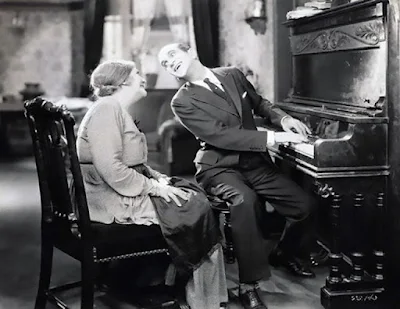In the bustling streets of 1931 Berlin, a child innocently plays while a murderer's haunting melody echoes from the shadows. This pivotal moment in cinema is captured by German director Fritz Lang in his dark thriller, "M," signifying the true beginning of the sound era.
The introduction of talkies four years prior had disrupted the film industry, forcing stars to face voice tests and filmmakers to grapple with technical challenges. However, this period marked the birth of a new cinematic language.
As the industry overcame its initial hurdles, stars emerged, and the magic of cinema returned. The 1930s and 1940s, the height of the classical Hollywood period, were characterized by swagger, confidence, and mass appeal. Despite global traumas like the Great Depression and World War II, movies remained glamorous, escapist, and filled with laughter.
Notable figures like the Marx Brothers excelled in verbal virtuosity, while screwball comedies thrived on witty one-liners. The transition to sound wasn't universally embraced; Charlie Chaplin and Buster Keaton resisted, but others, like the Marx Brothers, found their perfect medium.
The classical Hollywood symbol, King Kong (1933), exemplifies the era's appetite for spectacle. The monster hall of fame also included iconic horror movies like Frankenstein and Dracula (1931). As the quest for excitement intensified, monumental films like "The Wizard of Oz" (1939) and "Gone With the Wind" captivated audiences.
Amidst the grandeur, Europe faced the harsh reality of Nazi rule, prompting many talented directors and actors to defect to Hollywood. World War II infused postwar movies with a new, abrasive edge. British comedies took on darker tones, as seen in Alec Guinness's multiple roles in "Kind Hearts and Coronets" (1949). Graham Greene's "The Third Man" (1949) added a peerless web of intrigue and betrayal to the postwar landscape.
In the United States, film noir emerged as a distinct genre, characterized by stylized shadow play and iconic characters like femmes fatales and world-weary gumshoes. Italy contributed its own flavor with Vittorio De Sica's "The Bicycle Thief" (1948), portraying everyday struggles with a cast of real people.
The most influential movie of the era, "Citizen Kane" (1941), directed by the young prodigy Orson Welles, reshaped the cinematic landscape. Despite varying critical reception, its impact was immense, highlighting the transformative power of young visionaries unburdened by the constraints of the past.
As the 1940s drew to a close, cinema had evolved, reflecting the societal upheavals and innovations of the time. The journey from the innocence of a child's play in 1931 Berlin to the complexities of postwar narratives marked a transformative era in the history of film.

